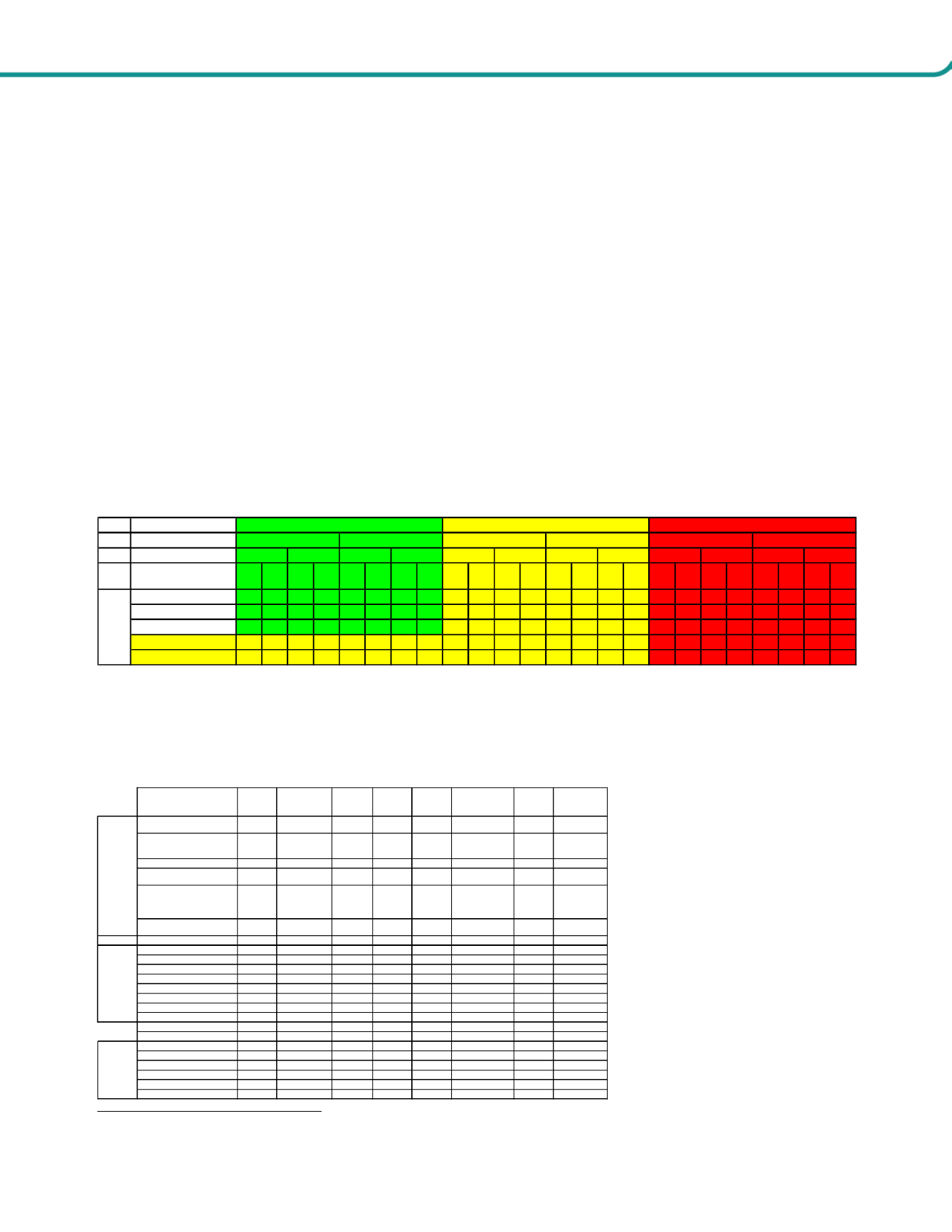
Appendix 5: Vulnerability Index
92
BBOP Pilot Project Case Study – Ambatovy Project
There are several ways to obtain
ATTRIBUTES
from the species Vulnerability matrix:
1. Fit all KBCM fauna and flora species into the matrix and assign a Vi number (1 to 30) and then simply
compare to the total number of species in the community considered with how many have specific Vi
numbers.
2. Determine the % of species with specific Vi numbers. For example, for all tree species assume that 30% of
those recorded in the benchmark have a Vi of 19 (EN, rare, localised), equating to 30% x 19 = 57. This can
be repeated for other Vi indices and finally a sum for the entire matrix table can be generated (for example
560). This value of 560 can then be compared with values for tree species from the impact site etc.
3. Taking a smaller community group, e.g. all lemur species, and proceed as above, assigning each species
a Vi score and then multiplying it with species biological data (e.g. density / ha) in order to obtain a sum for
each site. The higher the total Vi score is, the higher is the vulnerability of this group (note that the density
in the excel table is set at 1 until further data is collected during subsequent at Ambatovy).
The Vulnerability matrix developed by Ambatovy is presented below. This matrix was developed in April 2008,
as part of the second iteration of the benchmark and loss assessment
7
.
Table A5.1: Fauna and flora species Vulnerability matrix (April 2008)
Irreplacebility :
Abundance level:
Nocturnal/diurnal
Ability to move away
from impact
Y N Y N Y N Y N Y N Y N Y N Y N Y N Y N Y N Y N
LC
1 4 7 10 13 16 19 22 41 46 51 56 61 66 71 76 81 86 91 96 101 106 111 116
NT
2 5 8 11 14 17 20 23 42 47 52 57 62 67 72 77 82 87 92 97 102 107 112 117
VU
3 6 9 12 15 18 21 24 43 48 53 58 63 68 73 78 83 88 93 98 103 108 113 118
EN
25 26 27 28 29 30 31 32 44 49 54 59 64 69
74
79 84 89 94 99 104 109 114 119
CR
33 34 35 36 37 38 39 40 45 50 55 60
65
70 75 80 85 90 95 100 105 110 115 120
Site endemic
Common
Rare
Rare
Localised
Common
Diurnal Nocturnal Diurnal Nocturnal
Widespread
IUCN Status
Rare
Common
Diunral Nocturnal Diunral Nocturnal Diurnal Nocturnal Diurnal Nocturnal
A worked example of the application of the matrix to the Ambatovy KBCM is presented below (extract of
Ambatovy Project BBOP Bonn report (April 2008)).
Table A5.2: Key Biodiversity Components Matrix (KBCM) Vulnerability scores (April 2008)
Amabtovy KBCM Species IUCN Widespread Localised
Site
endemic Rare
Diurnal/Noct:
D/N
Moves:
Y/N
Vulnerabilty
indices'
Prolemur simus
CR
X
X
65
Propithecus d. diadema
CR
X
Indri indri
EN
X
Allocebus trichotis
EN
X
X
74
Daubentonia madagascarensis
EN
X
Eulemur rubriventer
VU
X
Birds
Tyto soumagnei
EN
X
Platypelis sp. nov
NE
X
Scaphiophryne marmorata
VU
X
Rhombophryne coronata
VU
X
Mantella aurantiaca
CR
X
Mantella crocea
EN
X
Mantidactylus plicifer
NT
X
Pararhadinaea sp.nov
NE
X
Sanzinia madagascariensis
VU
X
Ratsirakia sp
NE
?
Rheocles sp
NE
?
Aloe leandri
NE
X
Asteropeia micraster
EN
X
Leptolaena multiflora
EN
X
Dalbergia baroni
VU
X
Cyathea dregei
NE
X
Cyathea cf tsaratananensis
NE
?
Lemurs
Herptiles
Fish
Plants
7
Ambatovy Project BBOP Bonn report (April 2008), with revised Benchmark selection and losses calculations, including KBCM matrix
update with species quantitative data).


